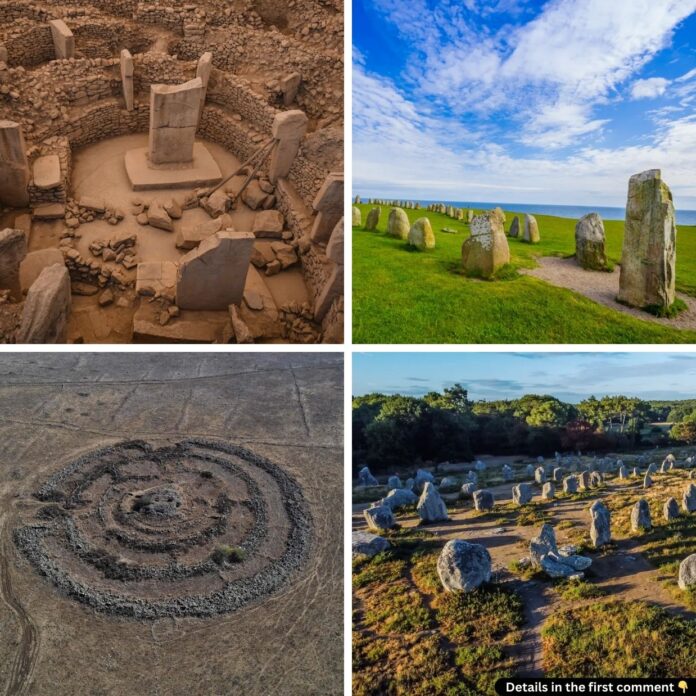Megalithic structures have fascinated historians and archaeologists for centuries. While Stonehenge is one of the most well-known prehistoric monuments, it is neither the oldest nor the largest of its kind. Across the globe, ancient civilizations constructed awe-inspiring stone structures that continue to puzzle researchers. These sites, built thousands of years ago, reflect early human ingenuity, spiritual beliefs, and sophisticated architectural skills. This article explores seven megalithic sites that rival Stonehenge in age, size, and historical significance.
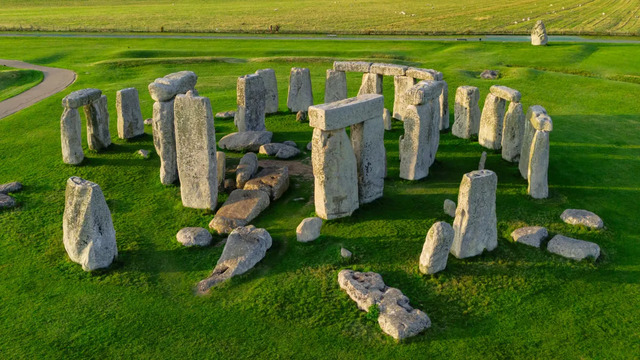
Göbekli Tepe: The World’s Oldest Megalithic Site
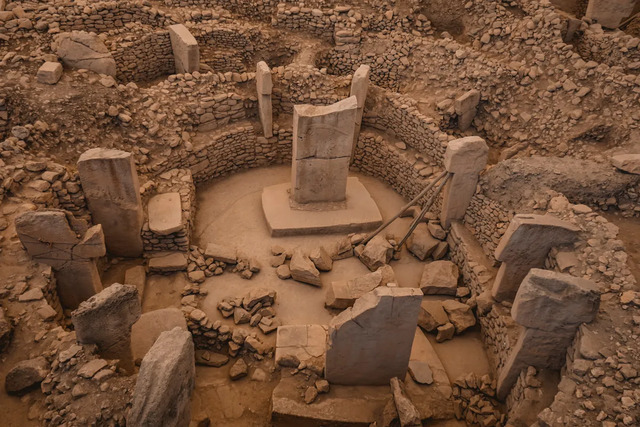
Located in southeastern Turkey, Göbekli Tepe predates Stonehenge by more than 6,000 years, making it one of the oldest known megalithic structures. Dating back over 11,000 years, this site was built by hunter-gatherers who had not yet developed agriculture or written language. The monument consists of T-shaped limestone pillars, some reaching 18 feet (5.5 meters) tall, adorned with intricate carvings of animals like foxes, boars, and vultures.
Unlike Stonehenge, which is generally thought to have been an astronomical calendar, Göbekli Tepe is believed to have had a religious function. Archaeologists speculate that it was a ceremonial site where rituals and gatherings took place, signifying an early form of communal worship. Given its immense age, Göbekli Tepe challenges previous assumptions about when complex societies first emerged.
Explore Göbekli Tepe, possibly the first temple on Earth, dating back to 10,000 BC – watch the ancient history documentary to uncover the secrets and significance of this remarkable site!
Avebury: The Largest Stone Circle in Britain
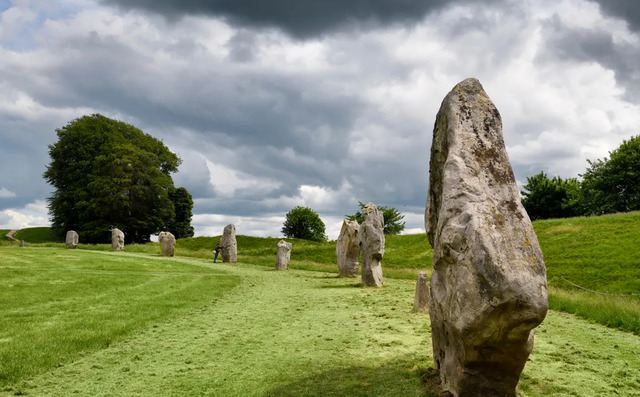
Located in southwest England, Avebury is the largest known stone circle in the world, with a diameter of about 1,378 feet (420 meters). Built around 2500 B.C., at the same time as Stonehenge, Avebury features a massive outer ring and two smaller circles inside. Unlike Stonehenge, which is largely intact, many of Avebury’s stones were removed or repurposed during medieval times.
Archaeologists believe that Avebury was part of a vast sacred landscape connected to other megalithic sites. Two long avenues lined with standing stones extend from the main circle, linking it to other prehistoric structures. While its exact purpose remains unknown, it was likely used for religious ceremonies, processions, and astronomical observations.
Explore the mysteries of Stonehenge, Avebury, and their associated sites in this UNESCO/NHK documentary – watch the video to uncover the ancient history and significance of these iconic landmarks!
The Ring of Brodgar: Scotland’s Prehistoric Monument
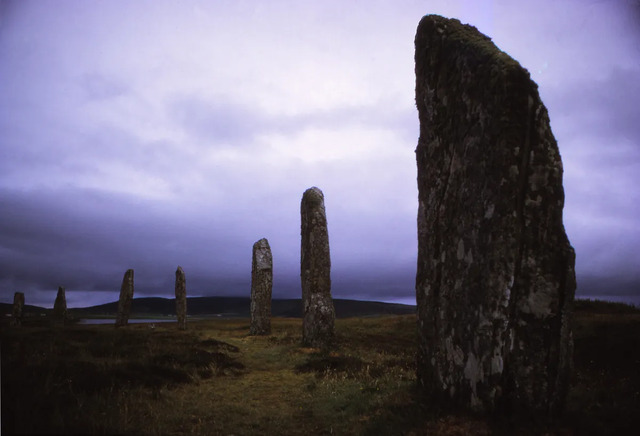
Situated on the Orkney Islands in Scotland, the Ring of Brodgar is one of Europe’s most significant Neolithic stone circles. Constructed around 2500 B.C., it originally consisted of 60 standing stones, though only 36 remain today. The circle, measuring 341 feet (104 meters) in diameter, is surrounded by a large ditch, reinforcing the idea that it was an important ceremonial site.
The presence of 13 prehistoric burial mounds near the Ring of Brodgar suggests that it was associated with funerary rituals. The monument is part of a larger complex that includes other Neolithic sites, such as the Stones of Stenness and Skara Brae, further highlighting Orkney’s importance as a prehistoric cultural center.
Take a journey through the Orkney Islands and explore the Ness of Brodgar in this documentary – watch to uncover the Neolithic history of Scotland, long before Caledonia!
Ale’s Stones: Sweden’s Mysterious Stone Ship
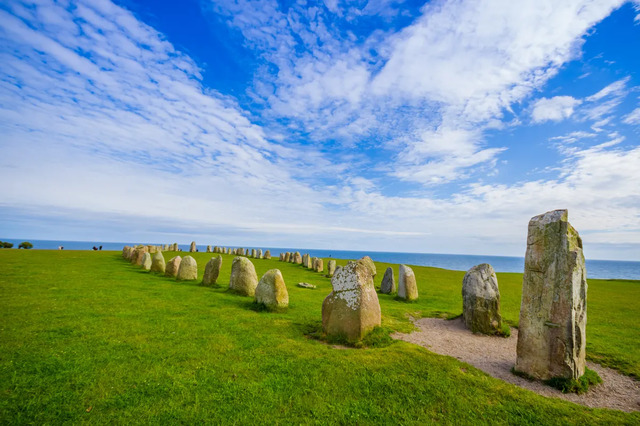
Ale’s Stones, or Ales Stenar in Swedish, is a fascinating megalithic site located near the fishing village of Kåseberga in southern Sweden. The monument consists of 59 boulders, each weighing up to 4,000 pounds (1,800 kilograms), arranged in the shape of a ship. Estimates of its age range from 1,000 to 2,500 years old, making it either a Viking-era construction or an older Bronze Age structure.
The purpose of Ale’s Stones is debated among scholars. Some theories suggest it was a burial monument, while others propose that it functioned as a solar calendar, with the stones aligned to mark the solstices. Regardless of its original intent, Ale’s Stones remains one of Scandinavia’s most mysterious prehistoric sites.
Explore Sweden’s most mysterious rocks in this fascinating episode – watch the video to uncover the hidden history and secrets behind these ancient formations!
Rujm el-Hiri: The “Wheel of Giants” in Golan Heights
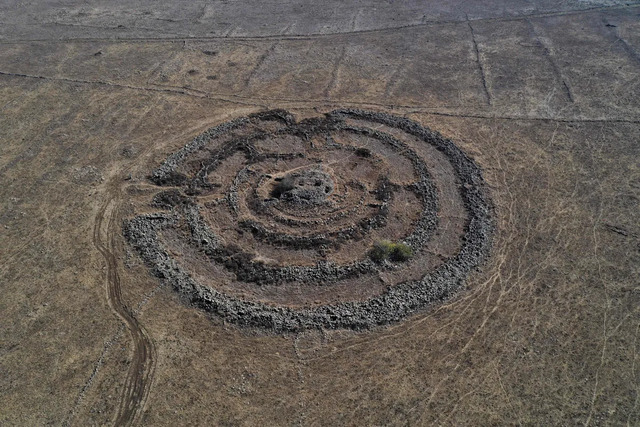
Rujm el-Hiri, also known as “Gilgal Refaim” (meaning “Wheel of Giants” in Hebrew), is a megalithic site in the Golan Heights dating back around 6,000 years. It consists of concentric stone circles surrounding a central tumulus (burial mound). The entire structure covers an area of about 520 feet (158 meters) in diameter, making it one of the largest and most complex megalithic sites in the Middle East.
The exact purpose of Rujm el-Hiri remains unknown. Some researchers believe it was an astronomical observatory, while others argue that it served as a sacred burial site for elite members of the ancient society. Unlike Stonehenge, which has clear alignments with celestial events, the astronomical significance of Rujm el-Hiri is still debated.
Discover Rujm el Hiri, a prehistoric ‘Stonehenge’ monument in the Golan Heights – watch the Reuters video to uncover the mystery and historical significance of this ancient site!
The Spanish Stonehenge: The Dolmen of Guadalperal
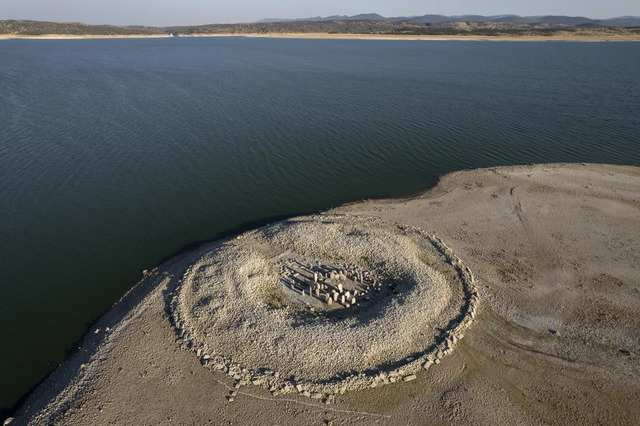
The Dolmen of Guadalperal, also known as the “Spanish Stonehenge,” is a megalithic site located in western Spain. Dating back approximately 7,000 years, it consists of around 150 standing stones arranged in an oval formation. The structure was submerged in the 1960s when a reservoir was created, but drought conditions have occasionally revealed the stones in recent years.
A notable feature of the Dolmen of Guadalperal is a large stone that appears to mark the entrance, engraved with a human figure and a possible depiction of a river or serpent. Although it shares similarities with Stonehenge, this monument is significantly older and may have functioned as a burial site or a place of worship.
Watch as a Spanish ‘Stonehenge’ is revealed due to a record-breaking drought – explore the GMA video to uncover this hidden monument and its fascinating history!
The Carnac Stones: France’s Enigmatic Megalithic Alignments
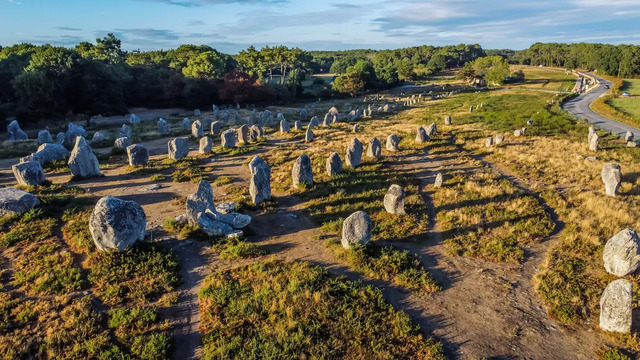
Located in Brittany, northwestern France, the Carnac Stones form one of the world’s largest megalithic complexes. Dating back around 6,000 years, they consist of approximately 3,000 stones arranged in rows and circles. The largest of these stones stands at 21 feet (6.5 meters) tall.
The Carnac Stones remain one of archaeology’s great mysteries. Some believe they mark ancient burial sites, while others suggest they were used for religious or astronomical purposes. Unlike Stonehenge, which is a single organized monument, Carnac’s stones are spread out across several miles, making them one of the most extensive prehistoric sites in Europe.
Watch as Ancient Aliens explores the mystery of the Carnac Stones and why they continue to baffle archaeologists – delve into the theories behind this ancient site in Season 9!
Conclusion
While Stonehenge is undoubtedly one of the most famous megalithic sites in the world, it is far from the only one. From Göbekli Tepe’s ancient ceremonial enclosures to the enigmatic Carnac Stones of France, megalithic structures can be found across the globe, each with its own unique purpose and historical significance.
These sites remind us that early civilizations possessed sophisticated architectural skills, deep spiritual beliefs, and an understanding of the cosmos that still baffles modern scholars. As new discoveries emerge, the mystery of these ancient megaliths continues to inspire curiosity and wonder.
